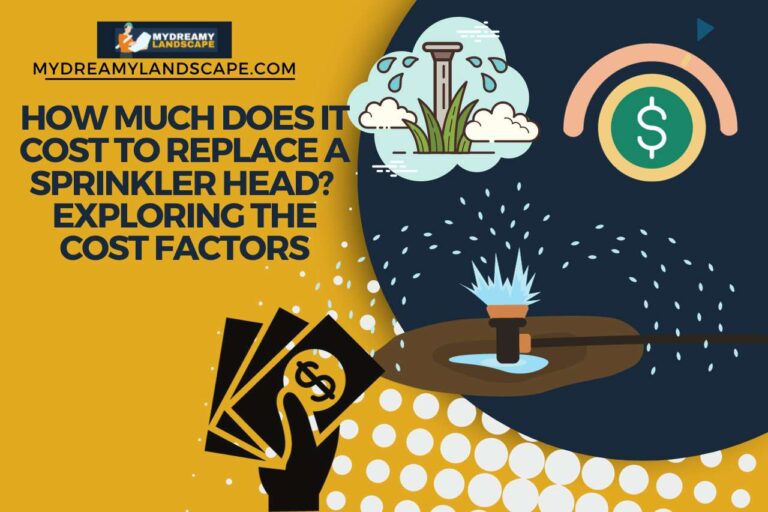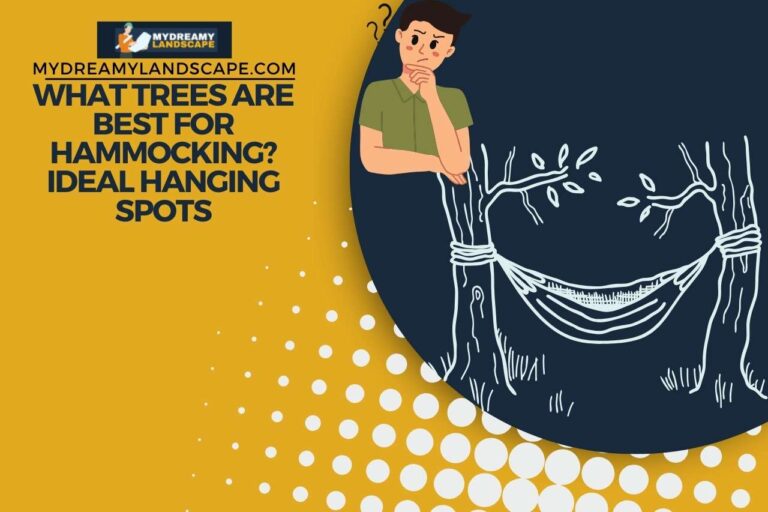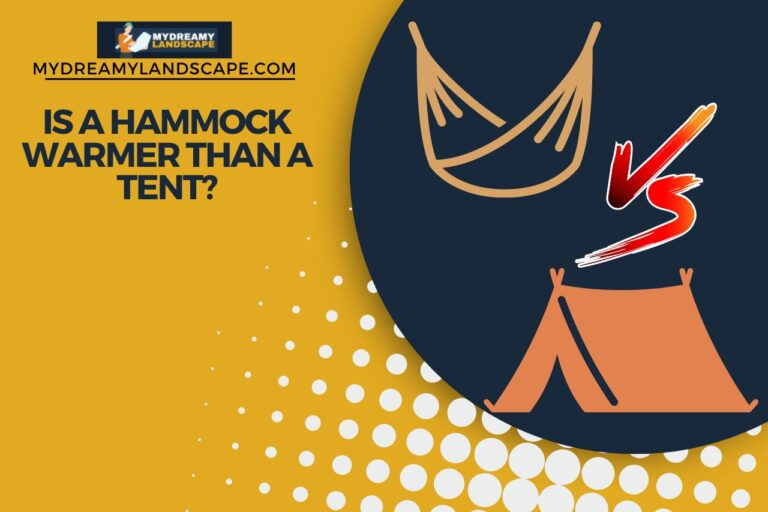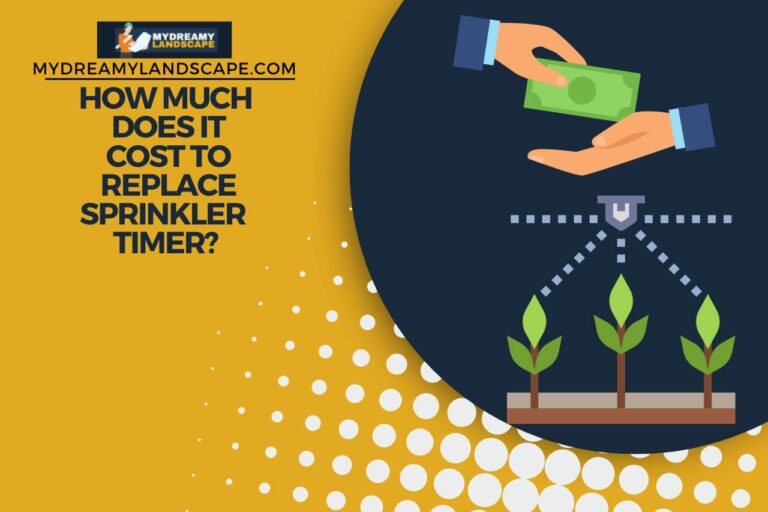Plywood vs Teak Outdoor Furniture – (Durability & Design Unveiled)
For every homeowner, finding outdoor furniture that balances aesthetics, toughness, and weather resistance is crucial. Plywood and teak are two common materials with specific outdoor applications and benefits. Compared to teak, a hardwood prized for its strength and natural beauty, plywood, an adaptable synthetic wood product, offers affordability and design flexibility. This article compares the strengths and limits of plywood and teak outdoor furniture to make a selection that aligns with your preferences and the particular requirements of your outdoor space.
What Factors to Consider When Choosing Outdoor Furniture?
Several vital variables should influence your choice of outdoor furniture. First, think about how long-lasting and weatherproof the material is.
Choose materials that can tolerate outside factors, including rain, sun, and temperature changes, to ensure long-term performance. Additionally, consider the upkeep requirements because some materials need more attention than others.
Test the seats and ergonomics to ensure your outdoor furniture provides a comfortable experience. Comfort is crucial. Furniture should match your taste and the design of your outside area in terms of style and aesthetics.
Consider the available space before choosing parts of the right size that fit snugly without being crowded. Finding a balance between quality and affordability that fits your financial constraints is essential because outdoor furniture comes in various pricing levels.
To extend the life of the furniture, consider storage options during lousy weather or off-season. By carefully assessing these considerations, you can choose outdoor furniture that improves your area and your pleasure.
Plywood vs Teak Outdoor Furniture
Durability
Teak retains a definite advantage over plywood regarding outdoor furniture longevity. The extraordinary inherent durability and weather resilience of teak are well known.
It naturally protects against moisture, pests, and decomposition thanks to its ingrained oils and strong grain structure. Teak weathers gently to a lovely silver-gray patina over time while maintaining its sturdiness and integrity.
Conversely, plywood can be treated and coated for outdoor usage, but it might not be as resistant to continuous exposure as teak.
If not properly sealed and maintained, plywood is prone to warping, delamination, and deterioration.
Ultimately, teak is more durable than plywood for outdoor furniture due to its natural resilience to environmental stressors and sturdy composition.
Maintenance
Teak and plywood outdoor furniture are distinct in terms of maintenance. Due to its low maintenance requirements, teak has a distinct benefit. Teak requires less maintenance because of its natural oils, which make wood resistant to rot, insects, and moisture.
Teak can age gracefully to a silver-gray color, but its original beauty can be recovered with regular cleaning and using oils or sealants made specifically for teak.
Plywood, on the other hand, needs more constant upkeep. Plywood must be adequately sealed and finished to guard against UV rays, possible delamination, and moisture infiltration.
The plywood needs to be cleaned, refinished, and sealed regularly to maintain its beauty and structural integrity outside.
Regarding upkeep, teak furniture is more manageable because it requires less work to maintain its beauty and toughness than plywood outdoor furniture.
Price
Price is a significant factor when contrasting outdoor furniture made of plywood and teak. Plywood typically provides a more affordable option, making it desirable for people looking for affordable outdoor furniture.
Its accessibility makes customization and design flexibility possible without breaking the bank. However, due to the superior quality and durability of the wood, teak outdoor furniture typically has a higher price tag.
Teak’s intrinsic resistance to the environment and aesthetic attractiveness are factors in its high price.
Teak furniture may require a higher initial investment, but because of its durability, it frequently has a longer lifespan, which may make up for the higher original cost.
Your money and priorities will determine whether you choose plywood for its cost-effective versatility or invest in teak for its enduring quality and timelessness.
Pros and Cons of Teak Outdoor Furniture
When making a decision, teak outdoor furniture offers a variety of benefits and drawbacks to consider.
- Teak’s excellent durability and built-in resistance to weather, insects, and decay are two essential benefits.
- It may survive outdoors for a long time because of the natural oils that protect it from dampness.
- Aesthetically, teak is desirable due to its rich, warm appearance and propensity to tarnish over time into a lovely silver-gray color. In addition, teak needs little upkeep, frequently requiring sporadic cleaning and the possible application of protective oils to keep its original color.
However, teak outdoor furniture has a higher price tag because of its superior quality and longevity.
- This price may be a significant consideration for buyers on a tight budget.
- While some people enjoy the aged patina, others might prefer the teak’s original golden color, necessitating sporadic refinishing to preserve the desired appearance.
- Additionally, the popularity of teak has raised questions about unsustainable logging methods, encouraging customers to look for alternatives with responsibly produced materials.
In conclusion, teak outdoor furniture has exceptional strength, timeless beauty, and little maintenance, but these advantages should be evaluated against its more excellent price and potential environmental impact.
Which Offers a More Stylish Look: Plywood or Teak Outdoor Furniture?
Compared to plywood, teak patio furniture typically looks chic and sophisticated. Teak’s rich, organic tones and beautiful grain patterns give outdoor settings a feeling of elegance and coziness.
Its timeless beauty harmoniously blends with various design motifs, from traditional to modern, giving it a flexible option for individuals looking for a sophisticated aesthetic.
Teak is charming because it may acquire a lovely silver-gray patina with time, giving off an air of understated luxury that changes with use.
Plywood patio furniture might have a more practical or modern appearance. Although it can be altered with treatments and coatings, teak’s natural depth and character may not appear. Plywood’s aesthetic offers a simple and basic visual appeal and can better suit minimalist or industrial design preferences.
Teak outdoor furniture frequently leads the pack in fashion, radiating a sense of distinction and timelessness that can improve outdoor spaces’ entire appearance and atmosphere.
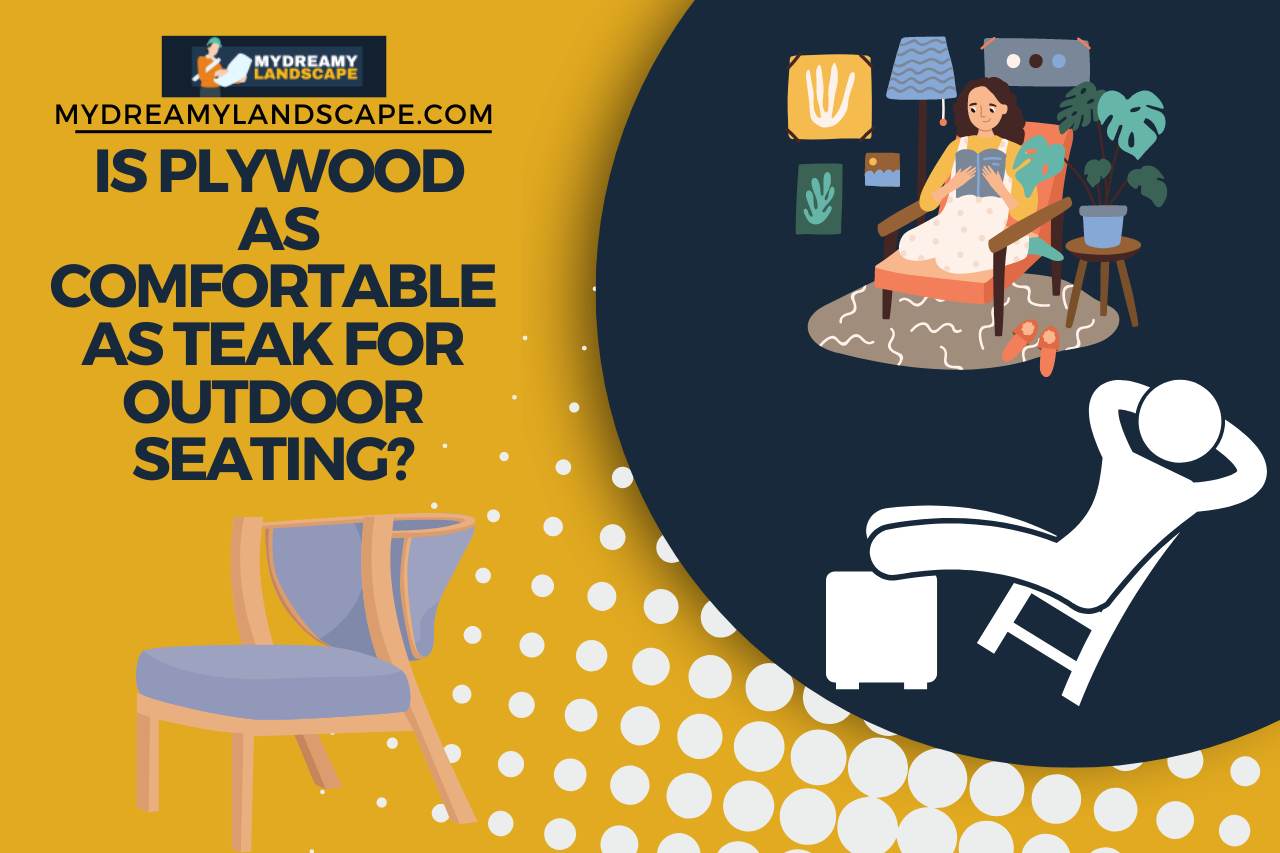
Is Plywood as Comfortable as Teak for Outdoor Seating?
Teak provides a more comfortable experience than plywood for outdoor seats. Teak wood naturally has a smooth surface and is splinter-resistant, making it a good choice for seating.
Due to the sturdy and supportive feeling that its deep grain structure provides, it is a good choice for outdoor sitting configurations.
Natural oils found in teak not only shield the wood from moisture and insects but also give it a touch of smoothness that makes it more comfortable.
Although plywood can be treated with sandpaper to provide a smooth surface, it might naturally provide a different comfort level than teak.
The plywood texture could be rougher, and its qualities might need to be more suitable for prolonged seating. Furthermore, plywood is more prone to warping or delamination over time due to exposure to outside conditions, which can impact the seating’s overall comfort and stability.
Due to its inherent qualities that support comfort and longevity, teak outdoor chairs frequently offer a more pleasurable and warmer environment.
Are Plywood or Teak More Eco-friendly Choices?
Due to problems with deforestation and ethical sourcing, teak is frequently seen as a less environmentally friendly option than plywood in terms of sustainability and environmental effect. Teak is a slow-growing hardwood that is mainly found in Southeast Asia.
Due to its popularity, overharvesting has occurred in some areas, endangering local ecosystems and natural habitats. Uncontrolled logging techniques can contribute to deforestation and biodiversity loss.
On the other hand, Plywood may be an eco-friendlier choice if it is produced using wood from sustainable sources or approved by agencies like the Forest Stewardship Council (FSC).
Although teak can be sourced ethically and is considered sustainable, it’s essential to research and only buys from trustworthy sources to guarantee that environmental concerns are prioritized. When choosing between plywood and teak, choosing FSC-certified plywood or looking into alternative eco-friendly materials better match sustainability goals and result in less environmental impact.
Watch this one,
Video Credits – Woodworkers Source
You May Also Like
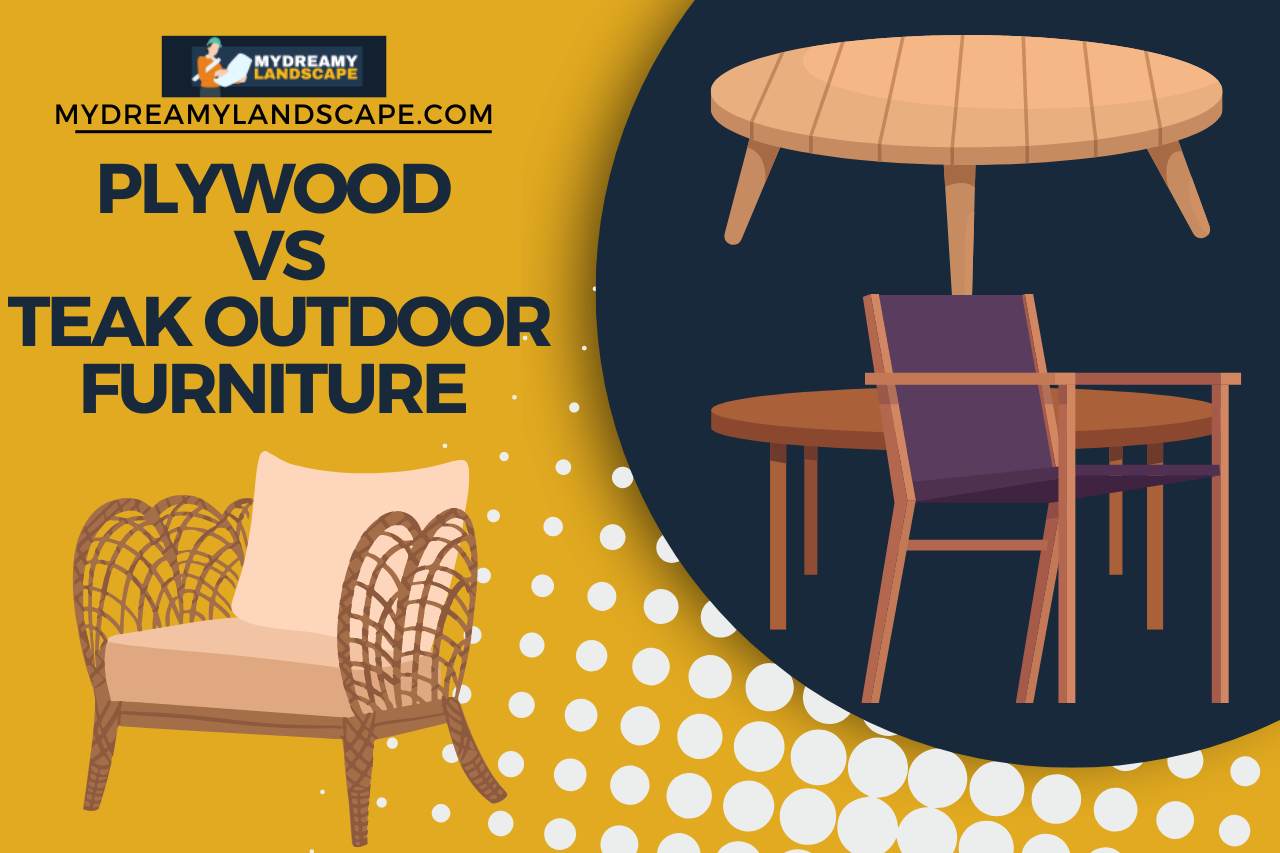
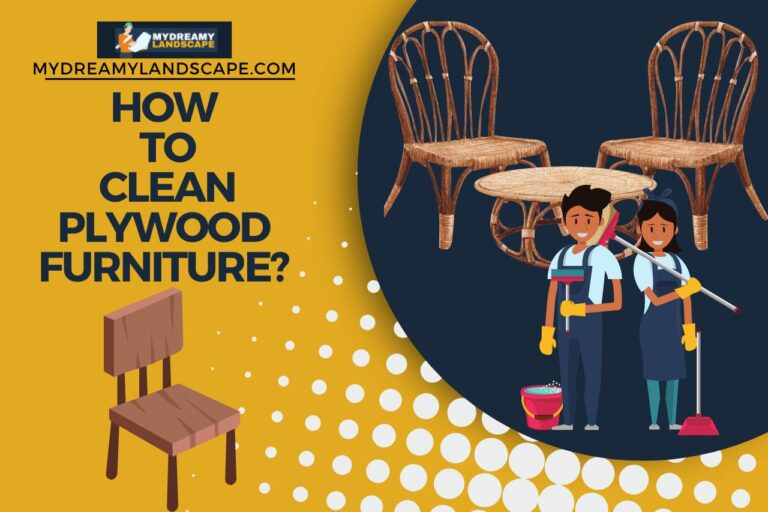
![Can you Use a Sprinkler with an Expandable Hose? [Pros and Cons]](https://mydreamylandscape.com/wp-content/uploads/2023/11/How-often-should-you-pressure-wash-your-driveway-14-768x512.jpg)
